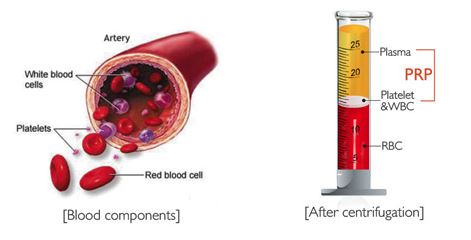Platelet-rich plasma (PRP) is a autologous (“own body”) fluid concentrate generated from the patient’s blood. Platelets are most often associated with coagulation, however, their role in wound and tissue healing is just as important. Platelets are one of the first cells at the site of injury, and once activated they are responsible for coordinating the inflammation and repair process. Activated platelets release a variety of growth factors and other mediators. These growth factors are powerful molecules that recruit healing cells and help form new blood vessels at sites of injury.PRP is a concentrated platelet fluid harvested from the patient’s blood. When PRP is used in the treatment of osteoarthritis it is believed to reduce inflammation, slow or repair cartilage degradation, and improve blood supply; this can alleviate pain and dysfunction associated with osteoarthritis.
Interleukin-1 Receptor Antagonist Protein (IRAP)
IRAP is a naturally occurring molecule in our body that has been experimentally shown to block and reduce any inflammation in processes such as osteoarthritis, which causes lameness, decrease in range-of-motion, and most of all pain. By harvesting the body’s own IRAP molecules and injecting them into an affected joint, we aim to help reduce osteoarthritic processes and reduce inflammation. This may decrease lameness and relieve pain.
The IRAP serum is collected and separated from the patient’s own blood. Although commonly referred to as IRAP, the enhanced serum product that is administered clinically is more accurately called autologous conditioned serum (ACS). This is because the product we harvest and isolate has more than just IRAP in it. It’s composed of other blood-derived products including growth factors that aid in anti-inflammatory functions.
We prepare IRAP serum by collecting the patient’s whole blood, and then incubate it in a special tube with medical-grade glass beads to activate white blood cells over 6-9 hours; this causes the cells to produce IRAP and other growth factors. We then separate ACS by utilizing a centrifuge, and then aseptically collect the serum, and inject it into the affected joint(s). Excess serum can also be frozen for up to 7 months, for future use.
Mesenchymal Stem Cells
Mesenchymal stem cells (MSC) are multipotent cells with the ability to differentiate into many other cells (for example- bone cells, cartilage cells, muscle cells, fat cells etc.). MSC have been isolated from a number of different tissues, but most commonly they are harvested from bone marrow or adipose tissue (fat). Surgically harvested and commercially processed adipose tissue is by far the most common means to obtain MSC in companion animals. This is because adipose tissue contains a greater number of MSC when compared to equivalent amount of bone marrow. Mesenchymal stem cells have been used in veterinary medicine for several years in the treatment of musculoskeletal conditions including tendon/ligament injuries, osteochondral defects, and osteoarthritis. However, despite the widespread use of MSC therapy in equine and companion animals, there are still relatively few strong reports critically evaluating the long-term efficacy of these treatments.
MSC are likely to provide a trophic (growth) support in the form of cytokines and growth factors that help to direct healing and reduce inflammation. The process of obtaining MSC is much different than IRAP or PRP, which require the patient’s blood; First we must harvest adipose (fat) tissue - this involves a minor surgery procedure done under general anesthesia where a minimal approach to the abdomen is preformed and falciform fat is collected. The tissues are then shipped same-day to an outside laboratory where they are processed and MSC are cultured. Within 2-3 days of obtaining adipose tissue the MSC samples are then shipped back to the clinic. Scheduling is crucial because once the MSC injections are sent, they must be used the same day. One added benefit to sending adipose tissue to a laboratory is that they can culture and bank doses for later use, for the life of your pet.
